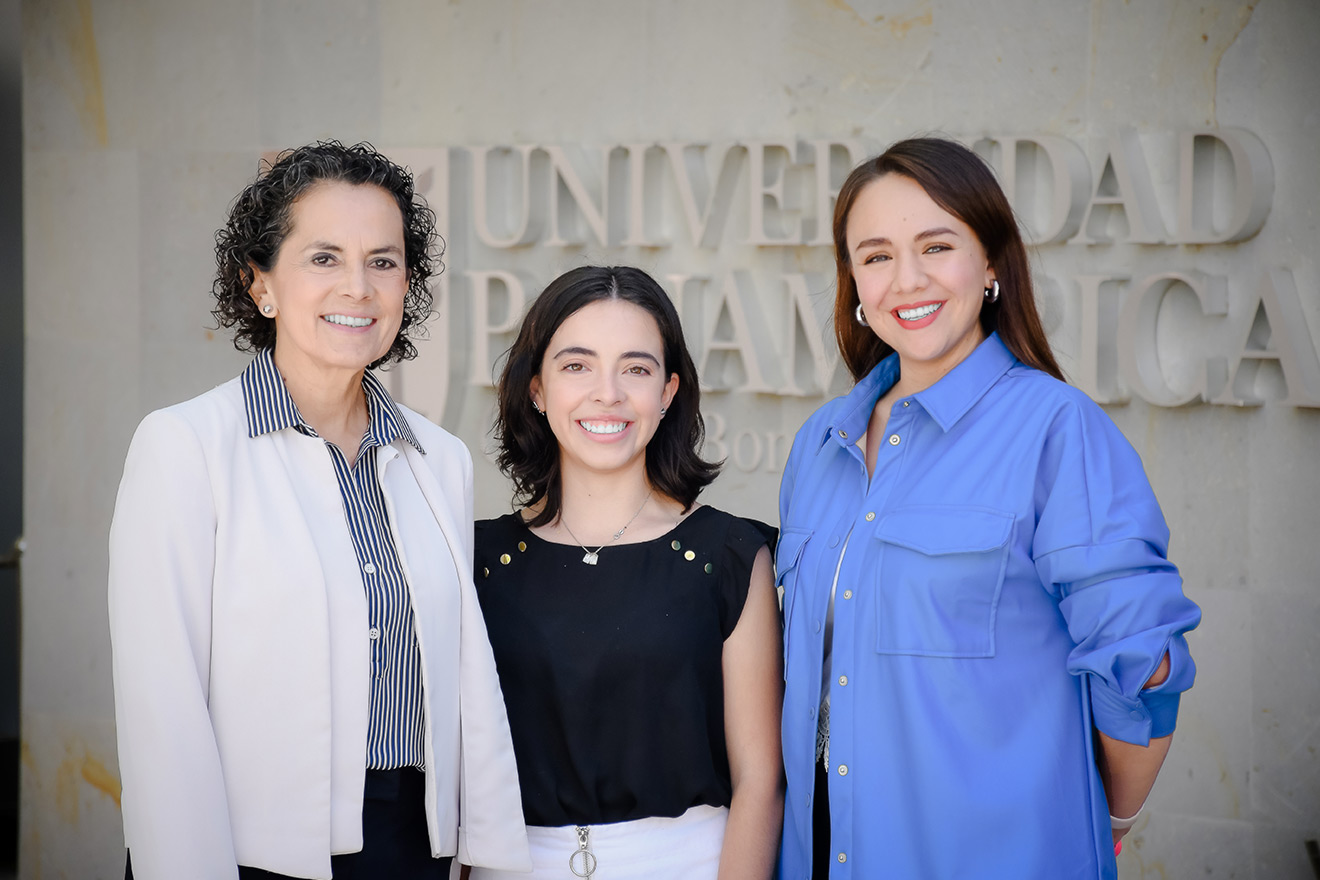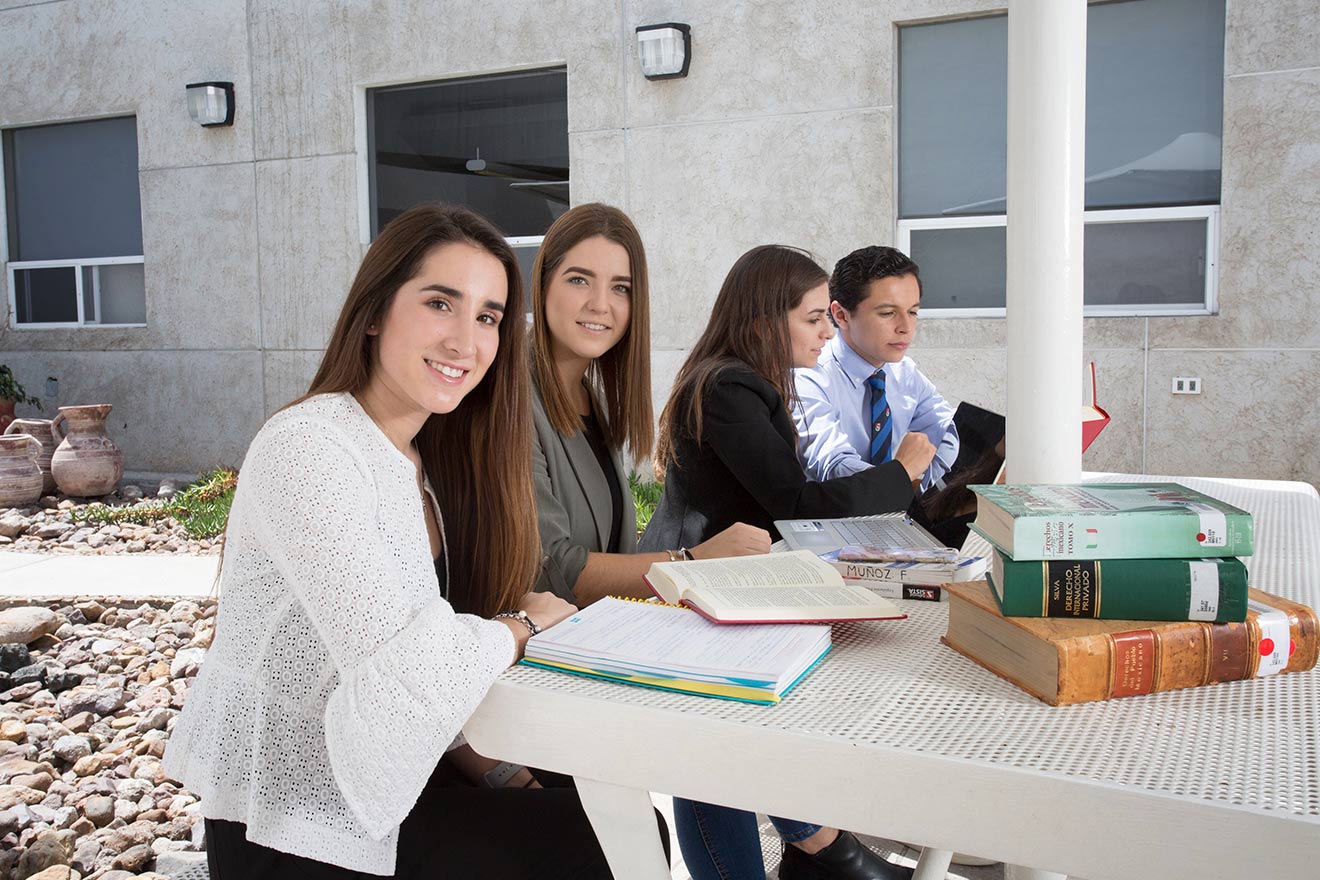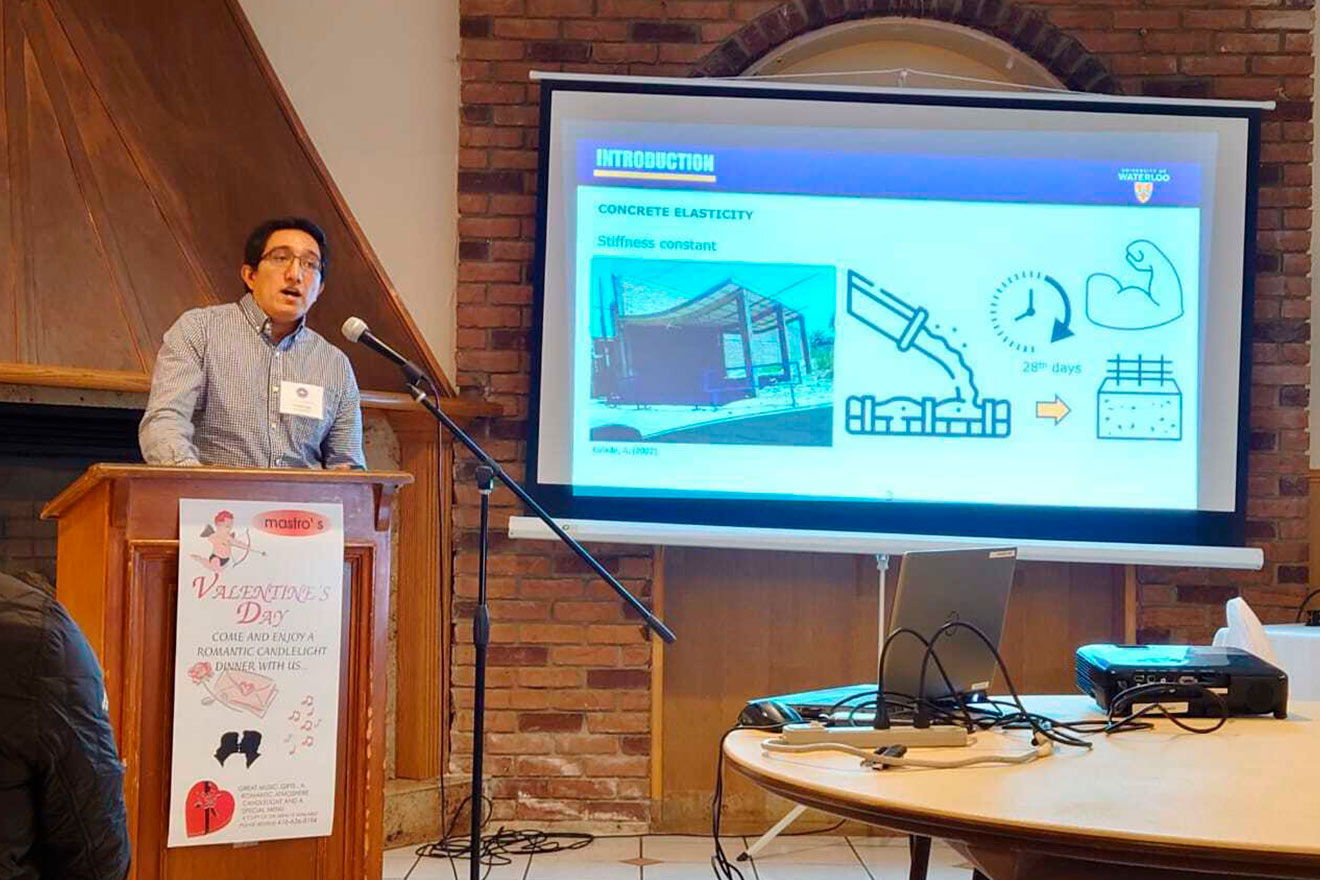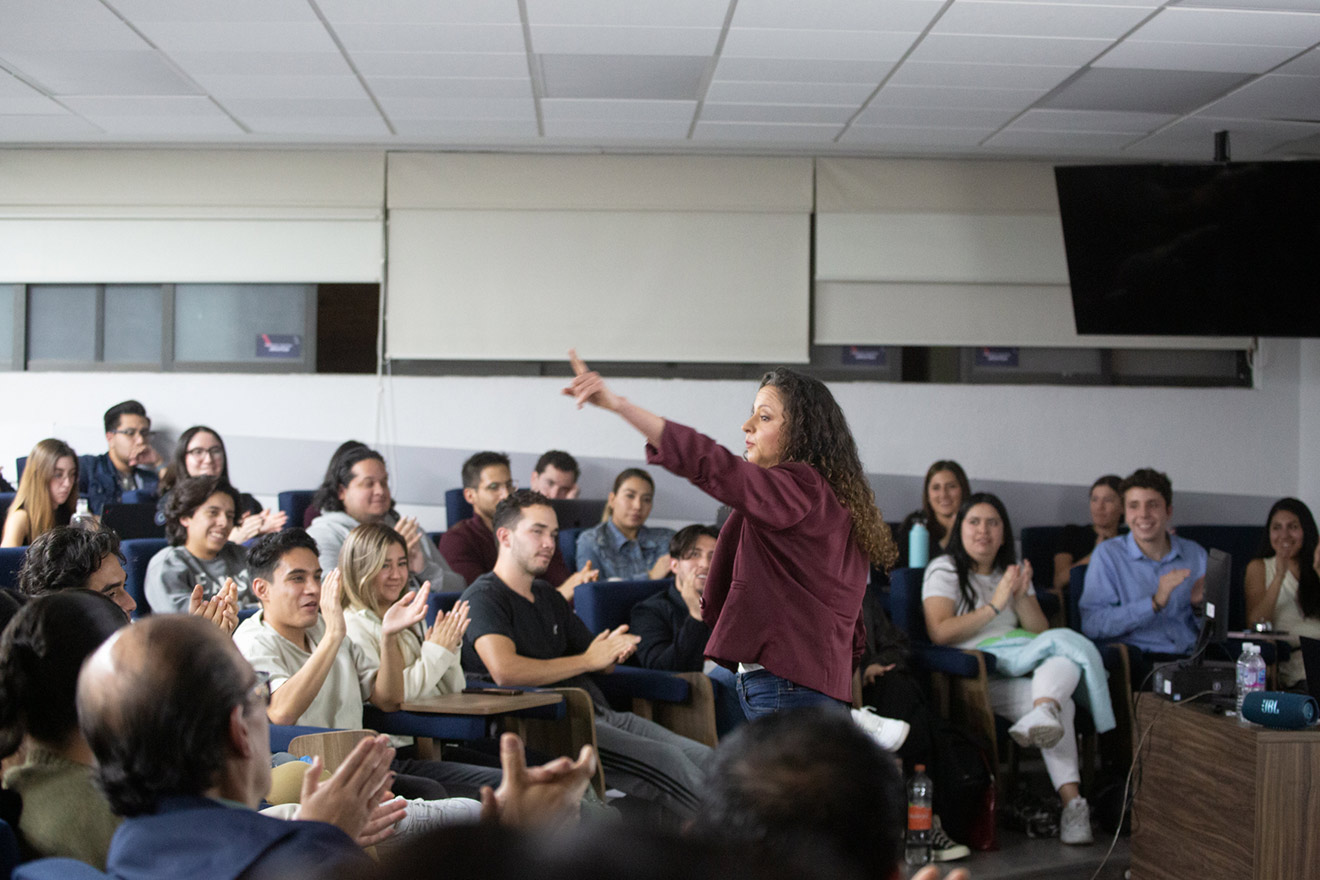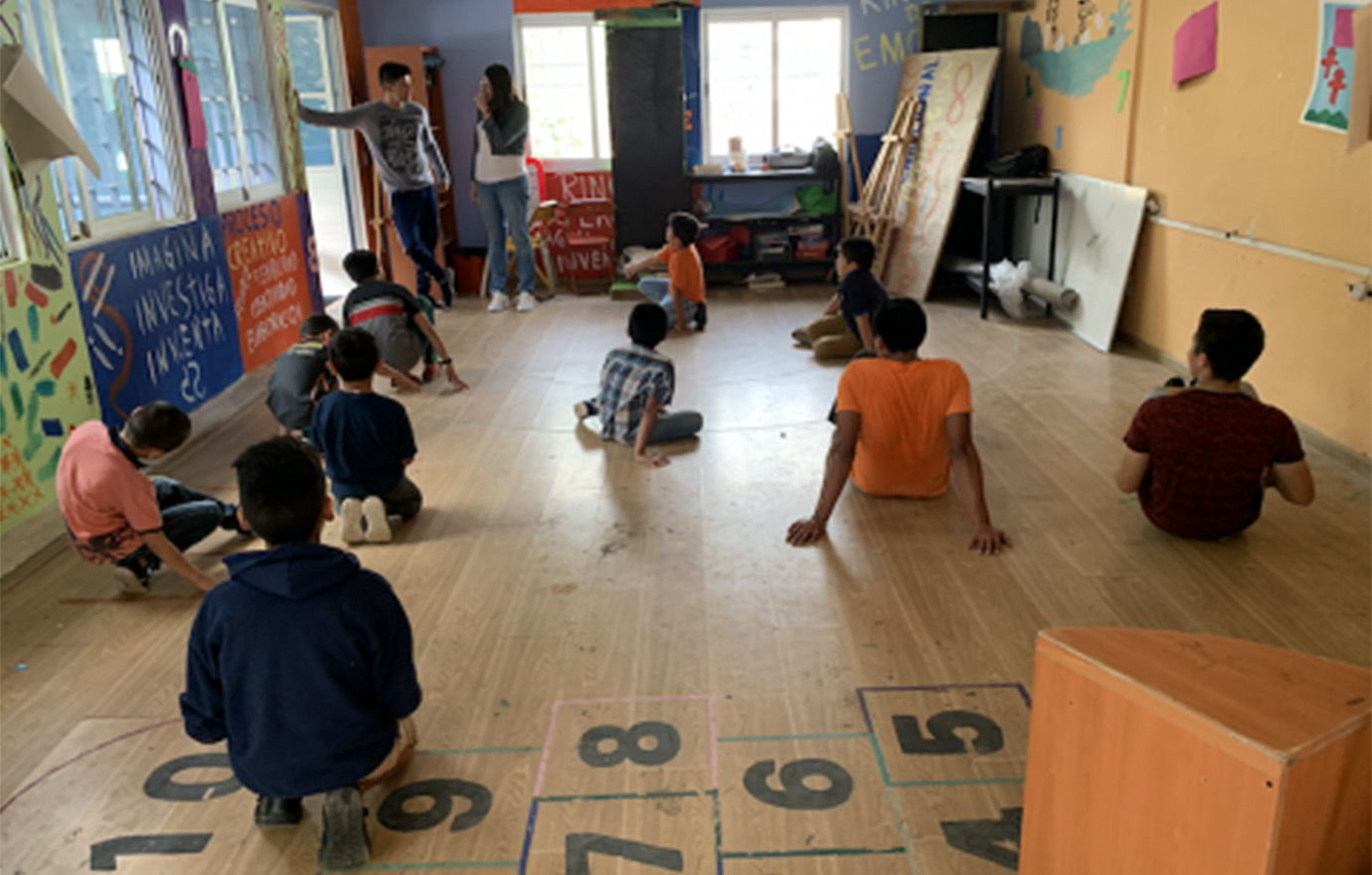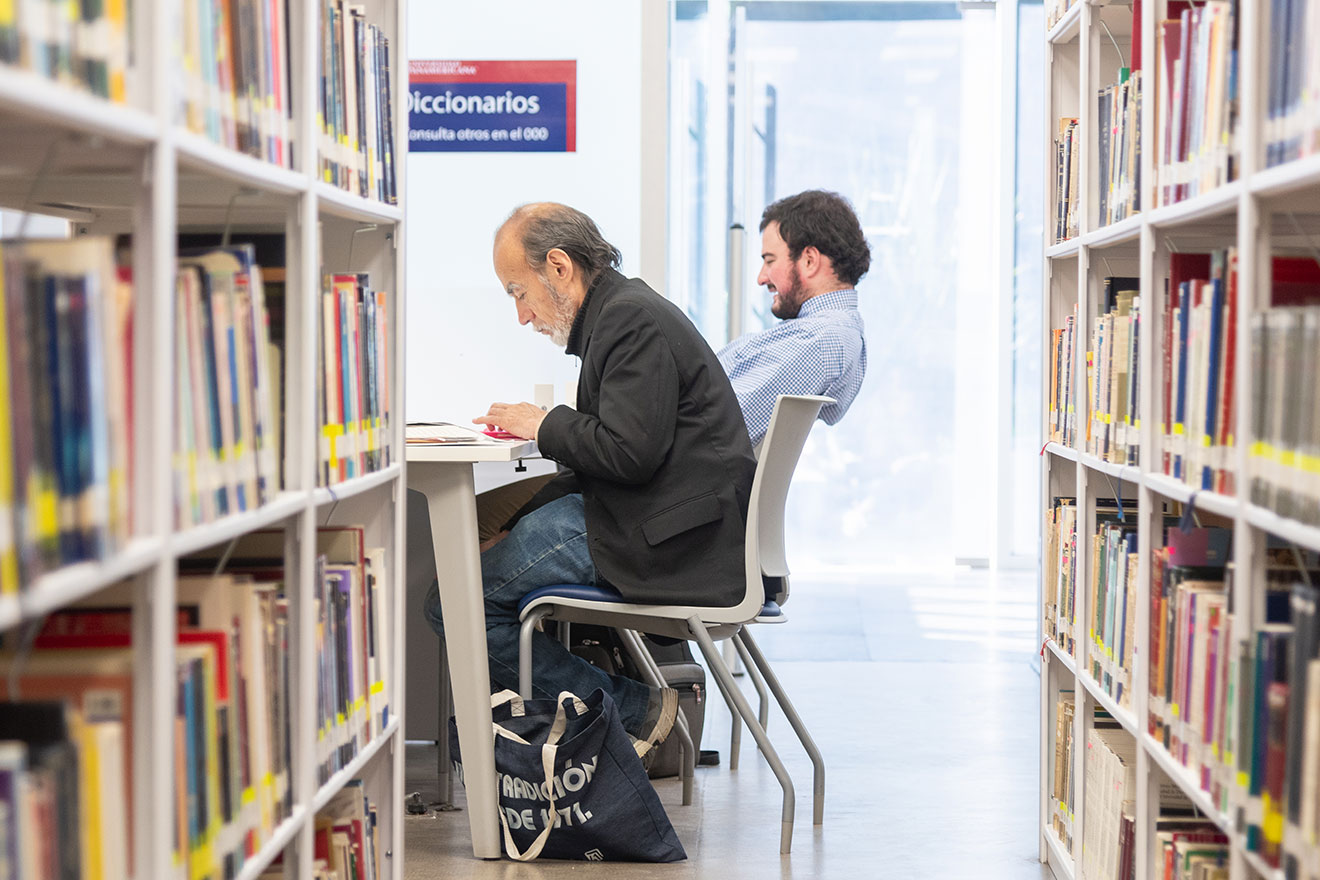Mexico City, April 15, 2024. Universidad Panamericana celebrated the reprinting of the book El obraje de Mixcoac en el siglo XVIII, a work by Dr. Salvador Cárdenas Gutiérrez.Salvador Cárdenas Gutiérrez, a work by Dr. Salvador Cárdenas Gutiérrez that deals with the history and operation of a obraje in the town of Mixcoac in the aforementioned century, precisely in what is now the campus of our university.
In addition to the author, the event was attended by Dr. Fernanda Llergo Bay, General Rector of Panamericana and IPADE; Dr. José Antonio Lozano Díez, President of the UP-IPADE Governing Board; Dr. Santiago García Álvarez, Rector of the Mexico City campus; and Maite Lot Goicuría, research professor at Panamericana, who was in charge of coordinating the reprint.
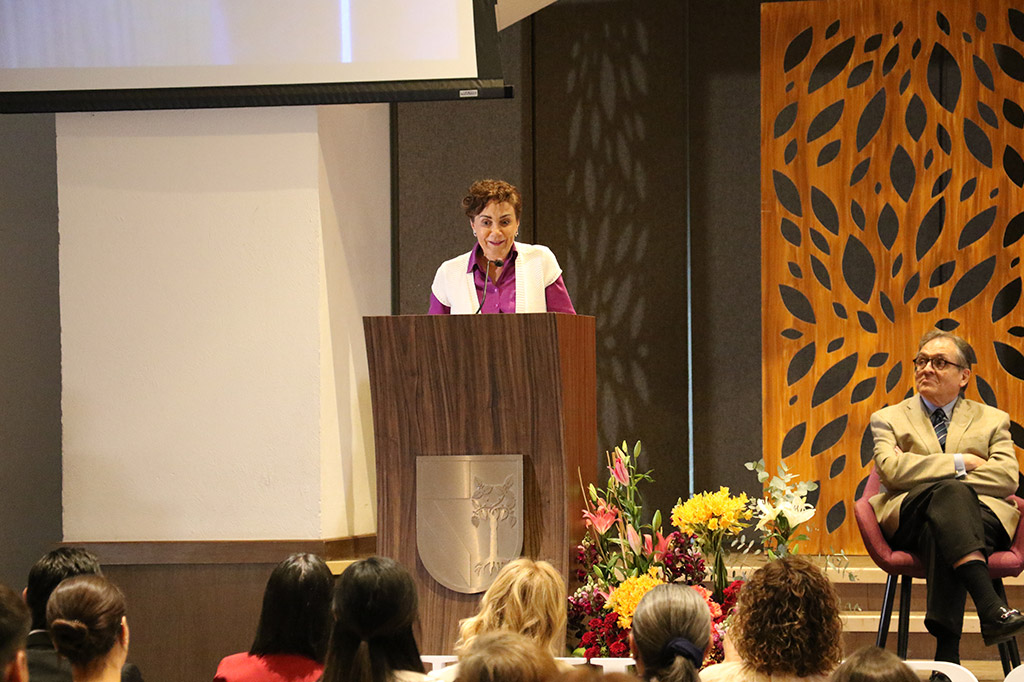
https://www.youtube.com/watch?v=J5HYOKDUuw0&t=81s
Historical heritage
In taking the floor, Mtra. Maite Lot expressed the deep bond she has had with the subject of the book presented and the interest that the history of our campus awakened in her since she was a student at Panamericana.
He emphasized the importance of reprinting the book El obraje de Mixcoac en el siglo XVIII, noting that every time he spoke with Dr. Lozano, the idea of reprinting the book came up.He pointed out that every time he talked with Dr. Lozano, the idea of reprinting the book came up. He highlighted the arduous work of 15 years of research by Dr. Cárdenas, the five-year effort to bring this reprint to fruition and the importance of continuing to explore the history of the place in the 19th and early 20th centuries.
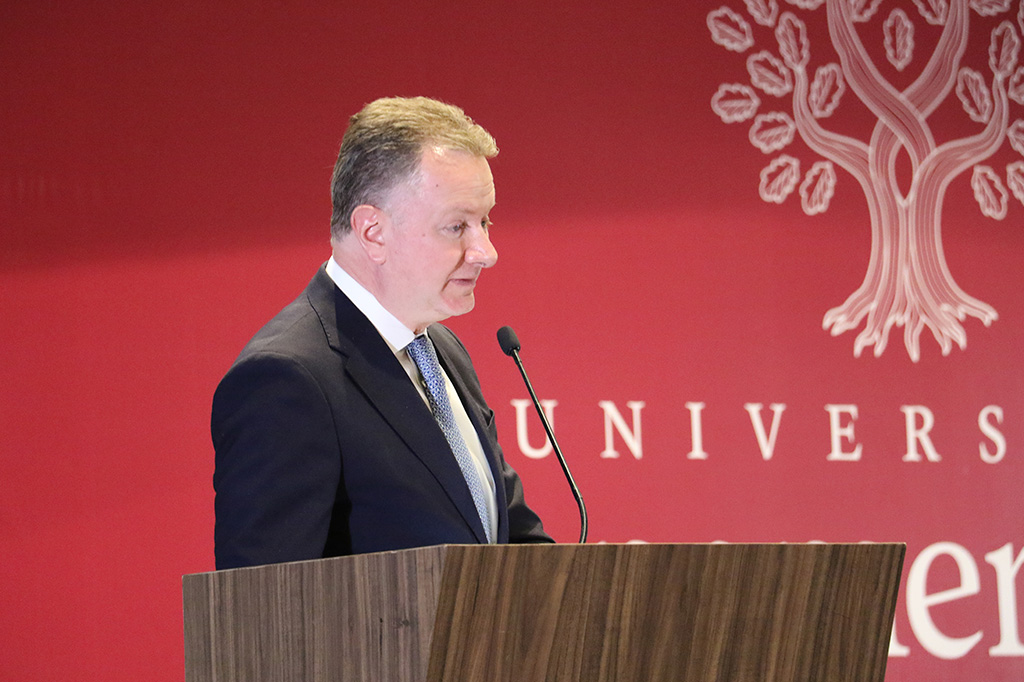
He also took the opportunity to highlight the pride of the Panamericana university community in having this historic heritage building and the importance of continuing to build new stories in this university space.
"I think (Panamericana) is a unique university, at least in our country, because it can be presumed that it has the architectural building consolidated in full of an 18th century obraje," he said.
https://www.youtube.com/watch?v=Y1jfKFwvyOU&t=8s
Transforming role of the Pan-American Highway
Dr. Salvador Cardenas then recounted his experience upon discovering the Panamericana building, where he studied law in 1981, and his subsequent connection to it. He also mentioned the then Vice Chancellor, Dr. Salvador Mier y Terán, who encouraged him and opened the door to research work; and his mentor, Guillermo Porras Muñoz, who introduced him to paleography and took him to the General Archive of the Nation.
He also spoke about the complexity of writing the history of obraje in the 18th century, highlighting legal, economic and social aspects. He stressed the importance of understanding the historical reality of Mexico, including labor exploitation and the lack of legal protection for certain social groups.
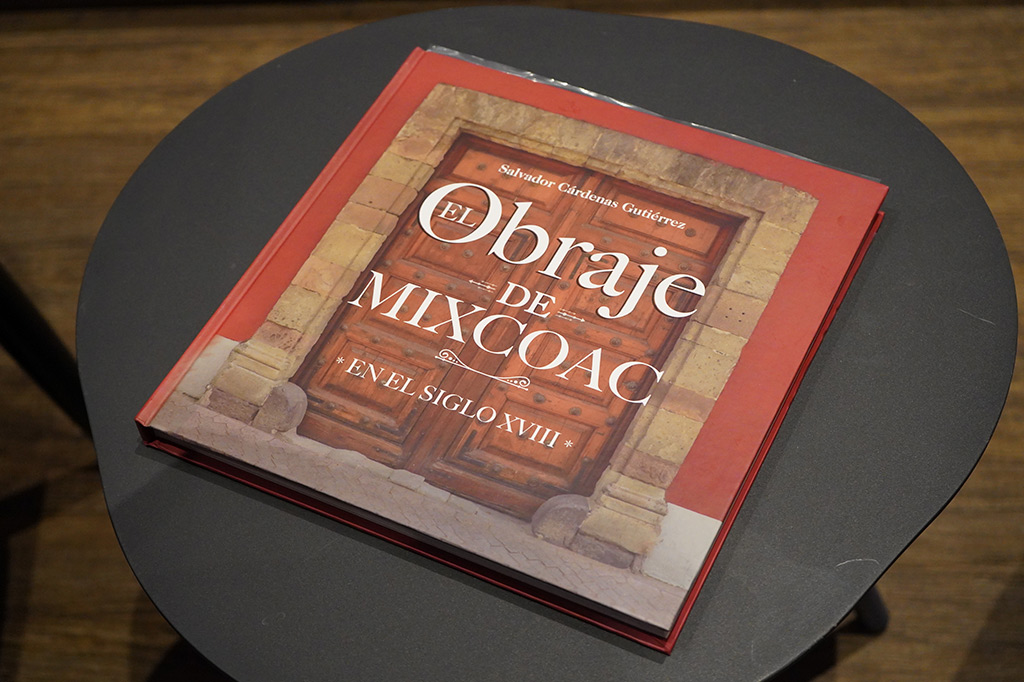
He also highlighted the transforming role of Universidad Panamericana in the formation of students committed to scientific rigor and ethics, contrasting with the injustices of the past. "The building is perfectly justified, because after having been what was once a place of exploitation, it has already been for many years the headquarters of a place where students are trained in a line of knowledge committed to scientific rigor and also to technology," he said.
He also specified: "The UP has erased with many merits, with many classes, with many personal commitments, many trained businessmen, etc., because it has improved and made amends for what happened in this building".
Finally, he expressed his joy for the opportunity to share his perspective on the importance of university education in a place with a significant history such as Universidad Panamericana.
The importance of putting down roots
Dr. Lozano then recalled the transfer of the Universidad Panamericana to the Mixcoac site in 1975, highlighting the coincidences and circumstances that led to this location.
He explained the historical and architectural context of the site, as well as the identity it has acquired thanks to the presence of the university and its prominent figures, such as Dr. Carlos Llano, the first rector of Panamericana, and Dr. Alberto Pacheco, a fundamental figure of the School of Law, who managed the acquisition of what is now our campus.
"In this building, we feel totally identified, we feel at home (...) If there is anything that this building has given to those of us who have passed through here, it has been friendship," he said.
He also reflected on the identity crisis and loneliness facing today's society, stressing the importance of human relationships and the need to find roots and companionship in a world marked by digitalization and artificiality. "This university allows us to build friendships for those of us who have passed through here."
Finally, he concluded by reflecting that "if this Universidad Panamericana has taught us anything, it is that physical spaces, such as this campus, this building, give us those roots", and quoted a phrase of Octavio Paz: "Freedom does not need to lay down arms, what it needs is to put down roots".
Pan American Identity
Dr. Garcia Alvarez expressed his gratitude for the preservation of the university's history and highlighted the importance of traditions and institutional identity. "If we can speak of there being a personality of the Universidad Panamericana, without a doubt this is strictly linked to this obraje and to this history (written in the book)."
He also recognized the work of Dr. Salvador Cárdenas and Maite Lot in the preservation of the culture and history of the Panamerican. " All of us Pan Americans fully identify with the Mixcoac work and we also identify with this magnificent work of Dr. Cardenas," he said about the work and research work of Dr. Cardenas.
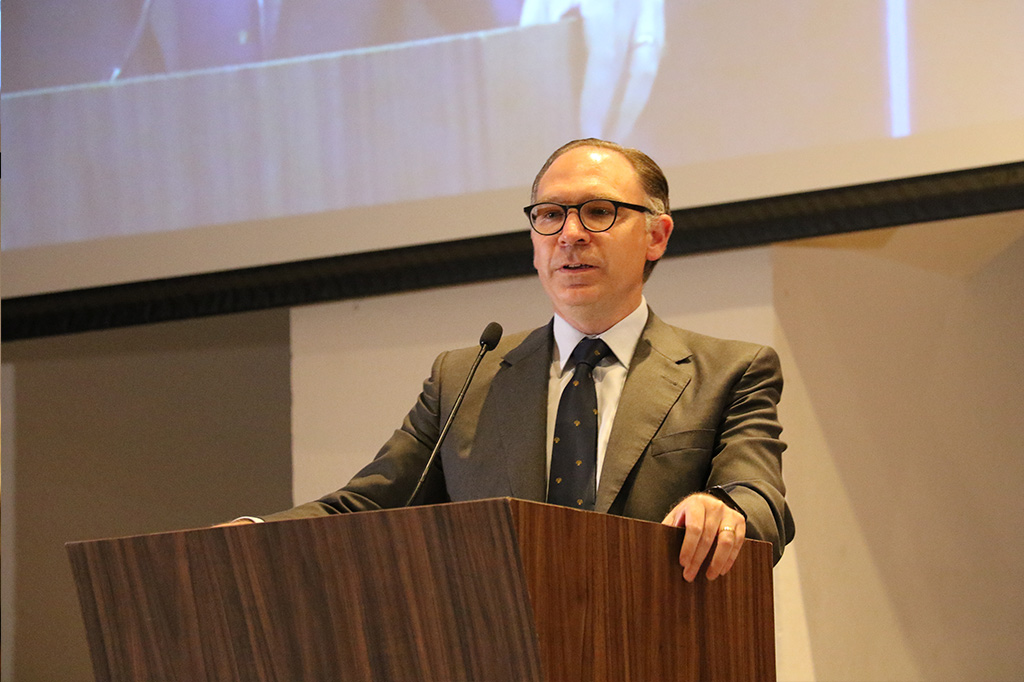
Lot said: "Maite can be defined as a distinguished professor, as an outstanding leader in the university, but then another way of describing her occurred to her, she is a tireless fighter", in reference to her persistence in launching the reprint presented and in preserving the culture and traditions.
He also mentioned upcoming projects to commemorate the 60th anniversary of Universidad Panamericana, including a collection of books on the history of the Pan American.
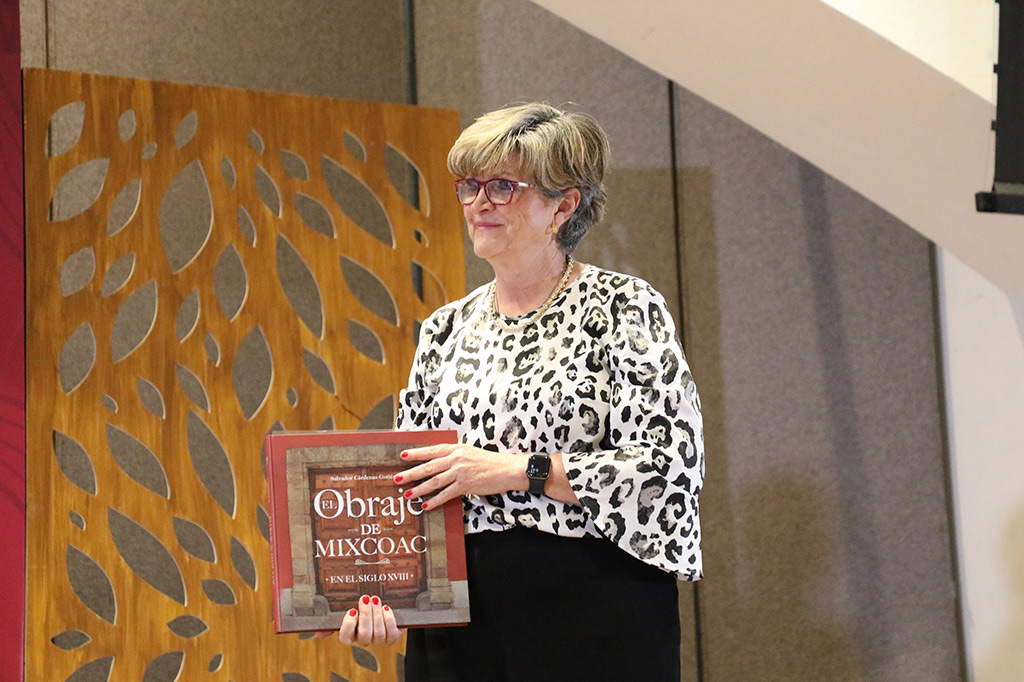
Working with the souls of our students
To close the event, Dr. Llergo emphasized the importance of Dr. Cardenas' work in revealing an unknown part of Pan American history.
In the same way, he highlighted the similarity between the university and the obraje in its capacity to influence society and train people: "As an analogy, the obraje was a place where fine cloths were woven, (although Salvador told us that it was also a place where jargons were woven). Today we embroider the souls of our students".
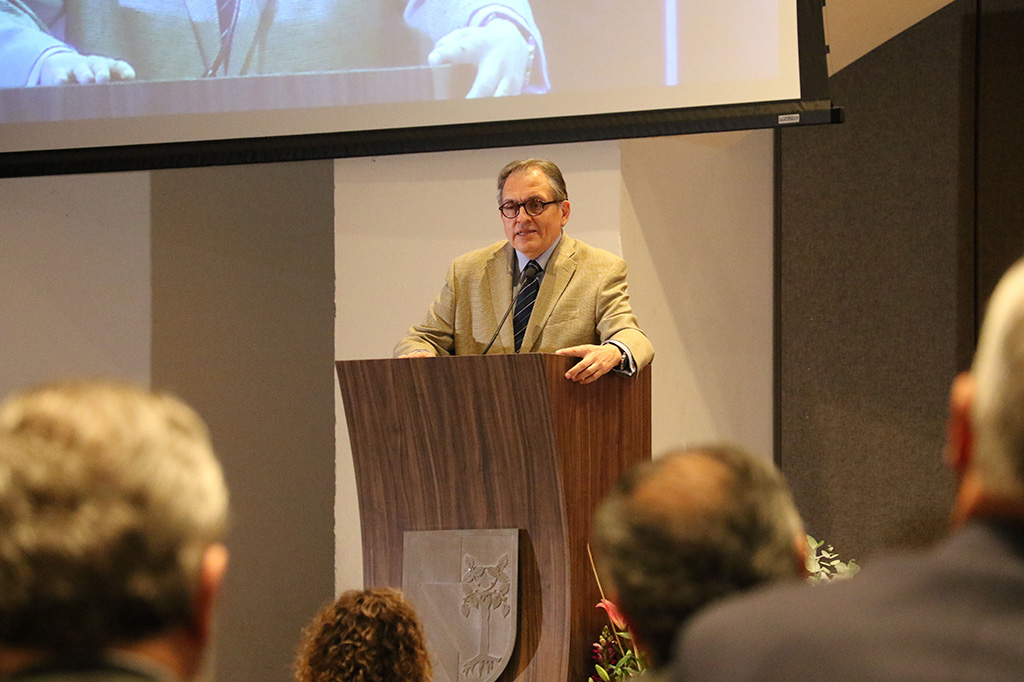
He also compared the teaching work at the Panamerican School to the embroidery that was carried out in the obraje: "We want to work on the souls of our students so that they become freer people, more in love with the search for truth".
Finally, the Chancellor General expressed her appreciation for the opportunity to gain a new perspective on the university and the history surrounding it. She thanked all those involved in the writing and reprinting of El obraje de Mixcoac in the 18th Century and stressed the importance of preserving and caring for the university campus as a legacy for future generations.
Learn more about campus Mixcoac at: https://www.up.edu.mx/campus-cdmx/



